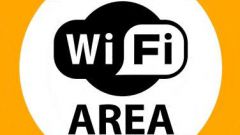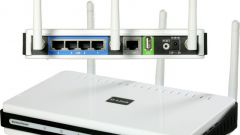You will need
- tin, connector N-type RF, wire
Instruction
1
A conventional antenna radiates a signal in all directions, a directional antenna provides for the transfer and acceptance of the signal in the desired direction.
On the Internet there are many tips on making the simplest antennas to enhance wifi.
The most popular model is made of ordinary tin, the size of which supports a wave with a frequency of 2 GHz. This wifi antenna works well on medium and short distances.
On the Internet there are many tips on making the simplest antennas to enhance wifi.
The most popular model is made of ordinary tin, the size of which supports a wave with a frequency of 2 GHz. This wifi antenna works well on medium and short distances.
2
For manufacturing the antenna do not use banks with finned surfaces, because they cause dispersion of the waves. You will need a tin with a diameter of 83 mm and длиной210 mm, RF connector N-type RF locking nut with a diameter of 12-16 mm, pigtail length 40 mm (copper or brass) and a diameter of 2 mm, a standard set of tools: ruler, pliers, can opener, soldering iron, file, hammer, vise, and a cable with a socket Wi-Fi USB adapter on one end, and connector N-type (male) on the other.
3
Remove the can opener, the upper part the cans, wash it with soap and warm water.
Drill a hole with a diameter of 12-16 mm, depending on diameter RF connector N-type, at a distance of 62 mm from the bottom of the cans. File down the edges of the hole.
Drill a hole with a diameter of 12-16 mm, depending on diameter RF connector N-type, at a distance of 62 mm from the bottom of the cans. File down the edges of the hole.
4
Clean, file the copper wire, heat one end, a soldering iron to solder the RF connector N-type in a vertical position is the active element Wi-Fi antenna. It has a height of 30.5 mm. Lock RF connector N-type in the Bank with a lingering nut and the connector. The antenna is ready. Its gain is in the range of 10 to 14 dBi, radiation cover 600.
5
Wi-Fi antenna can be made of conventional solid-core copper wire diameter 1 - 1.5 mm. One end is soldered to the connector or directly to the cable. Through 61 mm from the beginning of the wire is a loop with a diameter of 10 mm, 91.5 mm done another loop, then via 83 mm, wire bites. Design fits into the PVC pipe. This antenna will have a gain of 5-6dbi.


